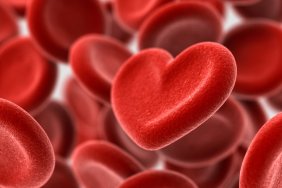Jennifer Lopez’s latest single, “Booty,” illustrates how far we’ve come. Now we can hold the virtue of the female bottom high, revering it as the pinnacle of artistic expression and human dignity.
Just kidding. The blood vessels in my forehead are pulsating. We’ve reached an unprecedented new low. The heroes of our past have been relegated to obscurity in place of twerkin’.
What happened to our idols? What happened to celebrating real human achievement? Very few regularly think about, or even know, these awesome men. Here’s a reminder of those we’ve forgotten who deserve to be remembered.

1. Norman Borlaug
In a gloomy parallel universe where Justin Bieber, Nikki Minaj, and Iggy Azalea reign supreme in American media, it’s easy to lose sight of what really matters. When he died in 2009, I can honestly say I don’t remember seeing anything on the news about Norman Borlaug.
He was the father of the Green Revolution, one of only seven to receive the Nobel Peace Prize, the Presidential Medal of Freedom and the Congressional Gold Medal. He saved the Third World, and most of the collective universe (or at least the Twitterverse) turned a blind eye.
The story begins on a fledgling Iowa farm during the Great Depression. Amid the Dust Bowl and a family lifestyle brimming with routine desperation, Borlaug cultivated in himself a desire to save the world. He’d move to Mexico where he’d change the face of global agriculture forever.
In the 60s Borlaug crossbred a type of wheat that could flourish in the tropics and withstand disease, including rust and other botanical pathologies. He brought the wheat variety to Mexico, Pakistan and India. Almost immediately, 95 percent of Mexico’s wheat utilized Borlaug’s model. Pakistan doubled agricultural production and vastly improved their food security. Incredibly, India’s economy grew nine-fold and the country has since doubled in population. Borlaug later brought his methods to Africa and other hungry regions of the world.
One humble American biologist would save a billion lives.

2. Ignaz Semmelweis
Ever wonder where the notion of washing your hands came from?
Ignaz Semmelweis was the first to notice cleanliness is next to godliness. He was a Hungarian physician who came up with the idea of hospitals using chlorinated lime in between handling cadavers and caring for patients. After imploring his hospital to adopt such an odd and unorthodox practice, its mortality rate dropped 90 percent.
His contemporaries thought he was insane, and so did his wife. They put him in an asylum where he later died, unrecognized and sorely misunderstood. Only a couple years after his death, Louis Pasteur would develop the germ theory of disease, based on his theories, and pave the way for a clean new world.
Ironically, Semmelweis died of septicemia, a disease caused by infection, which could’ve been thwarted with a simple scrubbing of Dove.
A million deaths would be prevented every year if everyone washed their hands, London researchers say. More than 247 Americans perish daily by the hands of germ-ridden doctors. You can thank Dr. Semmelweis for his simple idea, because without it, you’d likely push daisies.

3. James Harrison
If you’ve ever wondered whether real-life superheroes walk in our midst, you can put those thoughts to rest, because they do. Australian James Harrison is someone out of a comic book. Over the course of his lifetime, he has saved approximately two million babies.
His blood contains a rare antibody that cures unborn babies of Rhesus disease, a deadly form of anemia which destroys blood cells. Since he was 18, Harrison has donated plasma more than a thousand times. Now 77, he can look back and know he’s prevented approximately two million miscarriages and premature deaths.
The unique composition of his blood rendered Harrison a living angel.

4. Alexander Fleming
Back in 1920, if you caught gonorrhea from a filthy harlot, you most likely faced a swift and sudden death. Alexander Fleming accidentally discovered penicillin in 1928, and it is saving millions as I type these words.
Fleming noticed soldiers dying of sepsis caused by infected wounds during World War I. One evening in his lab, he observed bacteria avoiding an odd piece of mold which he later found to be part of the pennicillium family. He isolated it, tested it, and revolutionized modern antibiotics.
By World War II, Fleming and his cohorts manufactured enough penicillin to treat every soldier in the Allied Forces. (It’s one of the reasons we beat the Nazis.) Maladies from gangrene to syphilis to tuberculosis were eliminated with this potently magical antidote.
The next time you get The Clap, you have Alexander Fleming to thank on behalf of your genitals.

5. Robert Thom
Fun fact: Water-borne diseases cause 1.8 million deaths a year, a result of not having access to clean, pathogen-free H20.
Think about water. Think about how it’s used for industry and medicine and consumption and hygiene. Think about how utterly dependent you are on its proximate availability. When you think of water, think of Robert Thom.
Thom created the world’s first municipal water treatment plant in Paisley, Scotland in 1804. Nowadays, water treatment facilities of the same ilk can be found in every modernized city across the globe. And although Sir Francis Bacon dabbled in desalination techniques as early as 1627, Thom perfected the art of engineering high-quality H20.
The next time you indulge in some nice, clean, pristine tap, say a prayer for our lone Scot hero.
He would prevent innumerable deaths, now and in the future, and his Wikipedia page is only 85 words.









